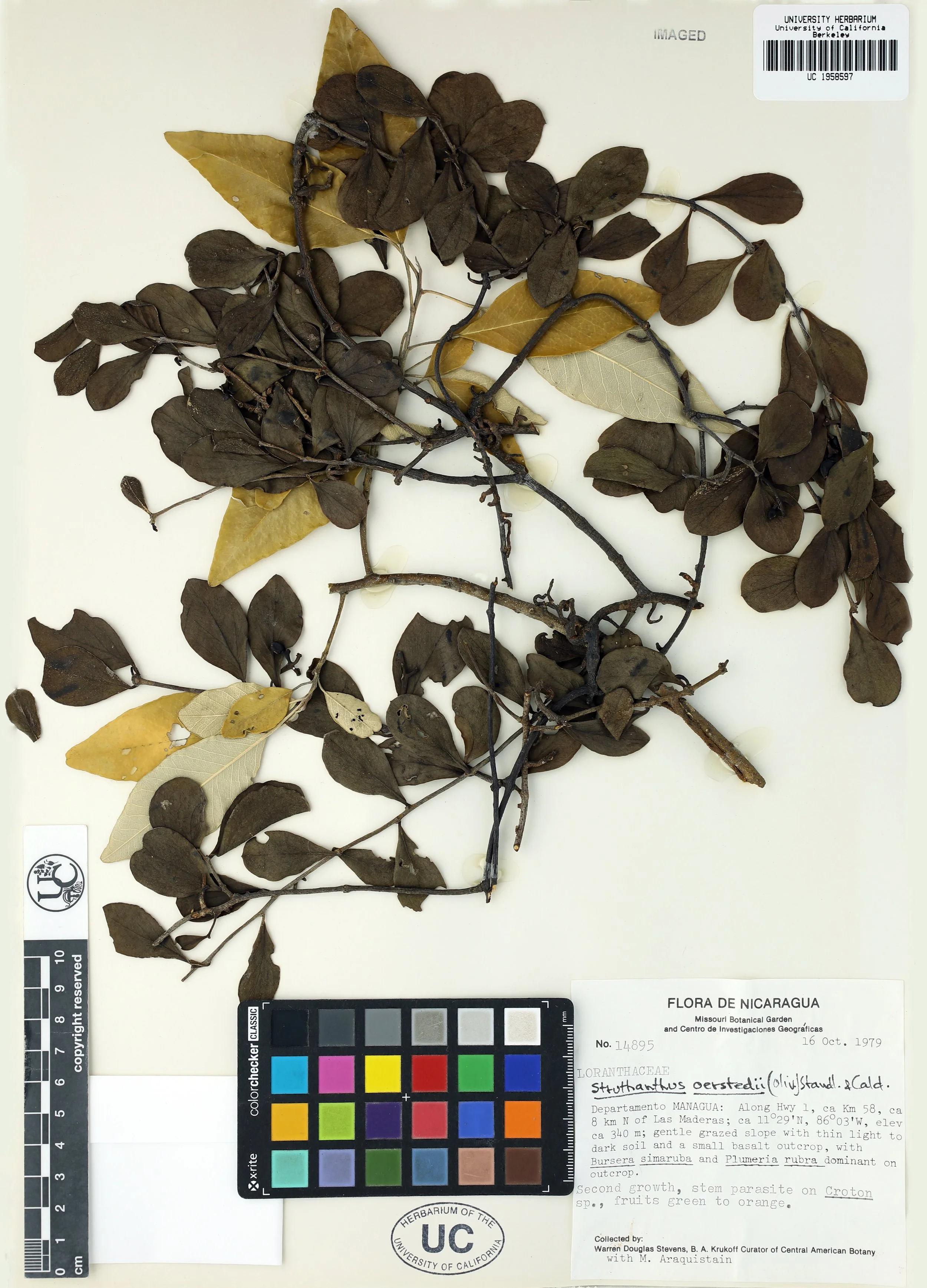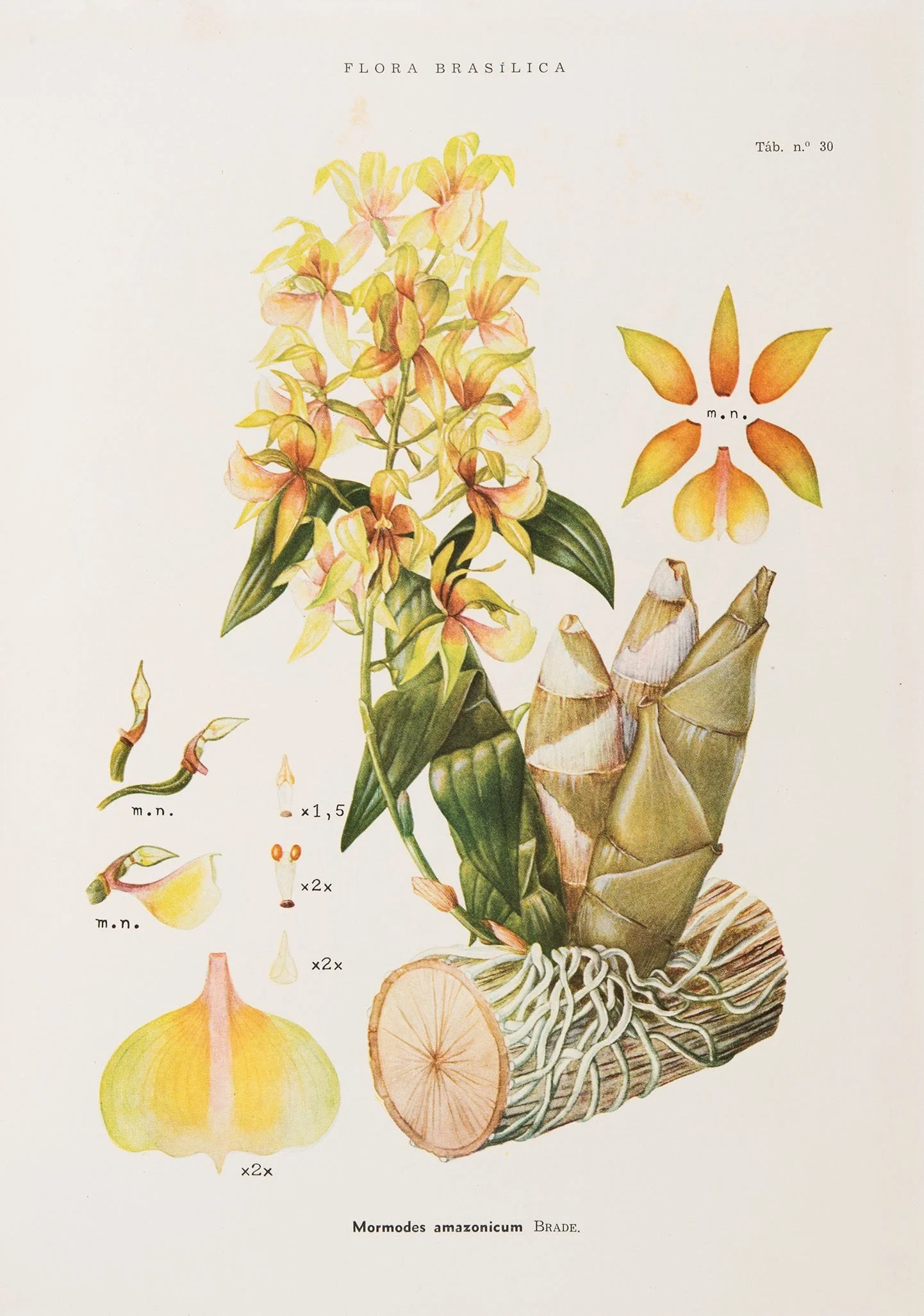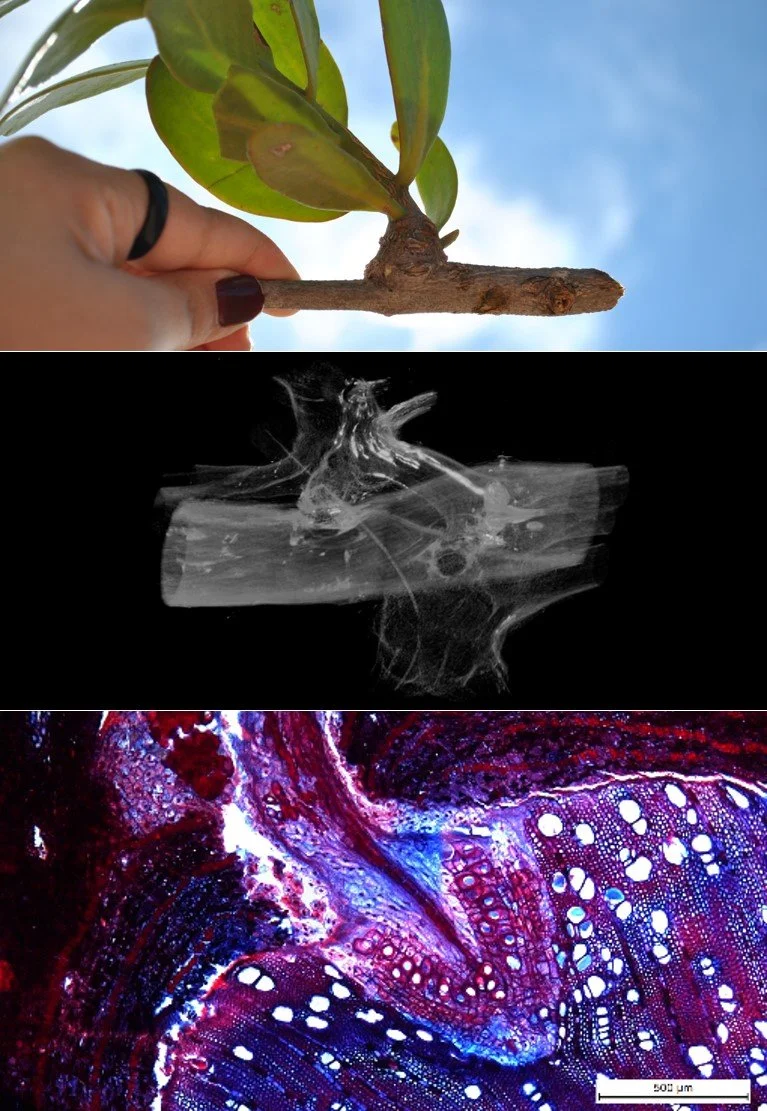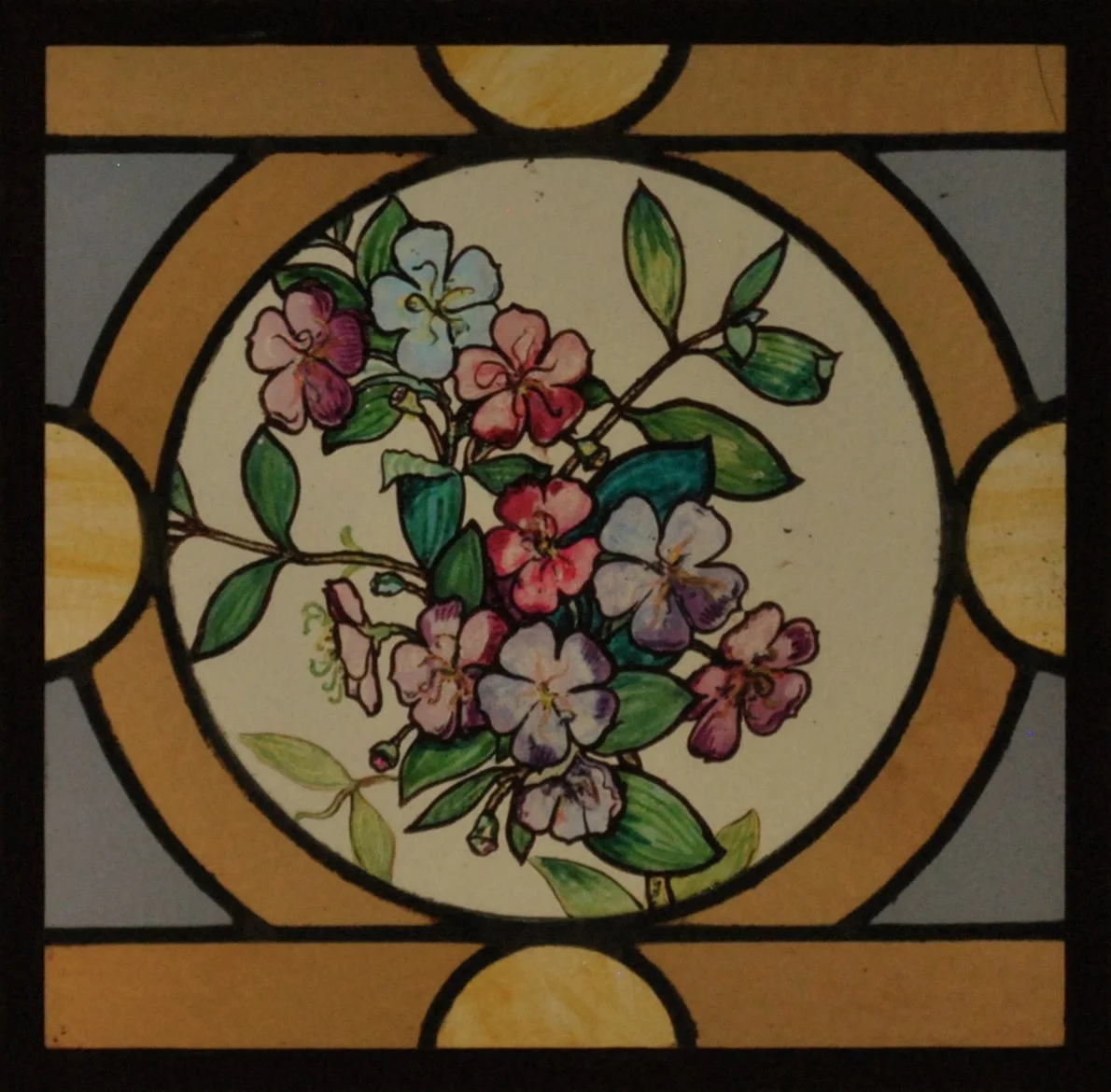Selected publications
Plant collections and collectors
L. Teixeira-Costa; J.M. Heberling,; C.A. Wilson; C. Davis. 2023. Parasitic flowering plant collections embody the extended specimen concept. Methods in Ecology and Evolution. https://doi.org/10.1111/2041-210X.13866
E. Hingst-Zaher; L. Teixeira-Costa. 2017. Raízes do paisagismo no Butantan: o Horto Osvaldo Cruz e a contribuição de F.C. Hoehne (“Roots of urban landscaping at Butantan: the Oswaldo Cruz Garden and the contribution of F.C. Hoehne”). In: Patrimônio, Cidade e Paisagem. ISBN 978-85-68242-45-2.
L.A. Teixeira; L. Teixeira-Costa; E. Hingst-Zaher. 2015. Vital Brazil: um pioneiro na prática de ciência cidadã (“Vital Brazil: a pioneer in the practice of citizen science”). Cadernos de História da Ciência. https://doi.org/10.47692/cadhistcienc.2014.v10.33904
Herbarium specimen from the collections at the University of California, Berkeley
Illustration of a tropical orchid by naturalist and collector F. C. Hoehne
Parasitic flowering plants
L.C.O. Pellissari; L. Teixeira-Costa; (…) C.F. Barros. 2022. Parasitic plant, from inside out: endophytic development in Lathrophytum peckoltii (Balanophoraceae) in host liana roots from tribe Paullinieae (Sapindaceae). Annals of Botany. https://doi.org/10.1093/aob/mcab148
L. Teixeira-Costa; C. Davis 2021. Life history, diversity, and distribution in parasitic flowering plants. Plant Physiology. https://doi.org/10.1093/plphys/kiab279
L. Teixeira-Costa. 2021. A living bridge between two enemies: haustorium structure and evolution across parasitic flowering plants. Brazilian Journal of Botany. https://doi.org/10.1007/s40415-021-00704-0
Y. Krasylenko.; J. Těšitel; (...) L. Teixeira-Costa. 2021. Parasites on parasites: hyper-, epi- and autoparasitism among plants. American Journal of Botany. https://doi.org/10.1002/ajb2.1590
F. Anselmo-Moreira; L. Teixeira-Costa; G. Ceccantini; C.M. Furlan. 2019. Mistletoe effects on the host tree Tapirira guianensis: insights from primary and secondary metabolites. Chemoecology. https://doi.org/10.1007/s00049-018-0272-6
L. Teixeira-Costa; F.M. Coelho; G. Ceccantini. 2017. Comparative phenology of mistletoes shows the effect of different host species and temporal niche partitioning. Botany. https://doi.org/10.1139/cjb-2016-0252
Different techniques for analyzing parasite-host connections: morphology, microtomography, and histology
Botanical art
L. Teixeira-Costa; Y.V. Hirao; E. Hingst-Zaher. 2018. Ilustrações no vitral do Museu do Instituto de Botânica de São Paulo (“Illustrations on the stained-glass of the Sao Paulo Botanical Institute Museum”). Cadernos de História da Ciência. https://doi.org/10.47692/cadhistcienc.2016.v12.33862
Botanical art in the stained glass decoration of the Sao Paulo Botanical Institute Museum
Complete list here




